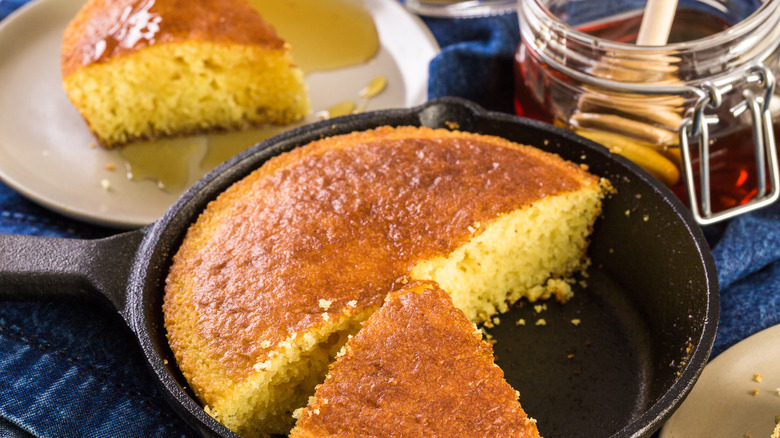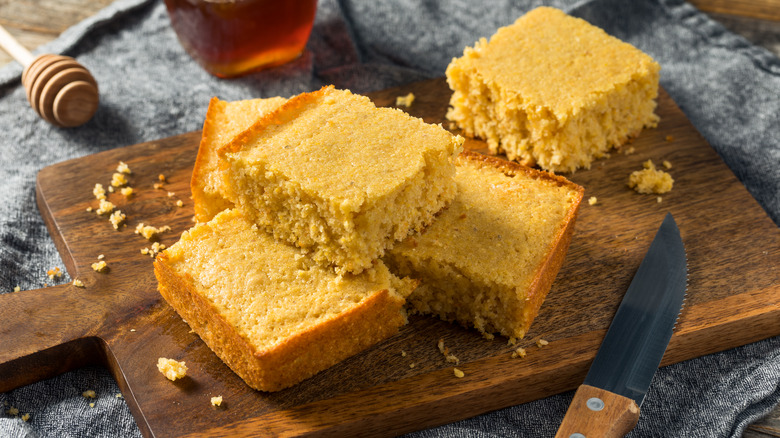Before Pouring Cornbread Batter, Your Cast Iron Should Be 'Sizzling Hot'
Sitting down to supper in the Deep South of America brings a fairly good chance of cornbread gracing the menu. That tradition has an even wider reach these days, cropping up on tables from East to West and most everywhere in between. But the true gastro-test of genuine comfort-food cornbread comes down to one thing: the heat level when the batter meets the pan.
When making cornbread, the pan gets the action going. So, the first and most crucial step is heating it to a level best described as "sizzling hot." Bypassing or minimizing that step robs you of the crunchy, golden-hued crust that defines Southern cooking, from cornbread to deep-fried chicken, catfish, okra, or pickles.
A piping-hot greased pan also keeps the cornbread from sticking, sealing in moisture while the interior cooks to a soft, cakey perfection. To really do things right, that pan needs to be a cast-iron skillet, traditionally a heavy black or dark gray one that can take on some heat — strong and sturdy is the name of the skillet game.
With cornbread recipes being passed down through generations, along with the requisite cast-iron skillets, you can imagine how nuanced the technique can be from family to family. But a few things are universally crucial: how you prep and heat the skillet, when to add the batter, and whether to cook stovetop or in the oven.
A hot skillet creates cornbread with a crispy, golden crust
A screaming-hot skillet needs to be "greased" first, which means adding a thin coating of oil, butter, or bacon grease to the skillet before heating it either on the stovetop or in the oven at about 425 degrees Fahrenheit. Refrain from pouring in the cornbread batter before taking that step.
Here's where processes begin to diverge. Some techniques call for pouring some of the heated oil directly into the cornbread batter, essentially replacing or boosting any oil required in the batter recipe. Regardless, leave about a tablespoon of the hot fat in the skillet, and add the prepared batter. If you've got it hot enough, you'll hear the glorious sizzling sound popping from your pan as the crust turns crispy brown. You can even add extras to the batter, such as bacon, jalapeños, corn, cheese, or onions.
An alternate "Northern-style" of cornbread still employs the preheated super-hot cast-iron skillet but calls for heating it dry. After it's hot, you can add butter and let it brown, then continue as usual, creating a luscious, sweet, brown-butter cornbread with a nutty flavor.

